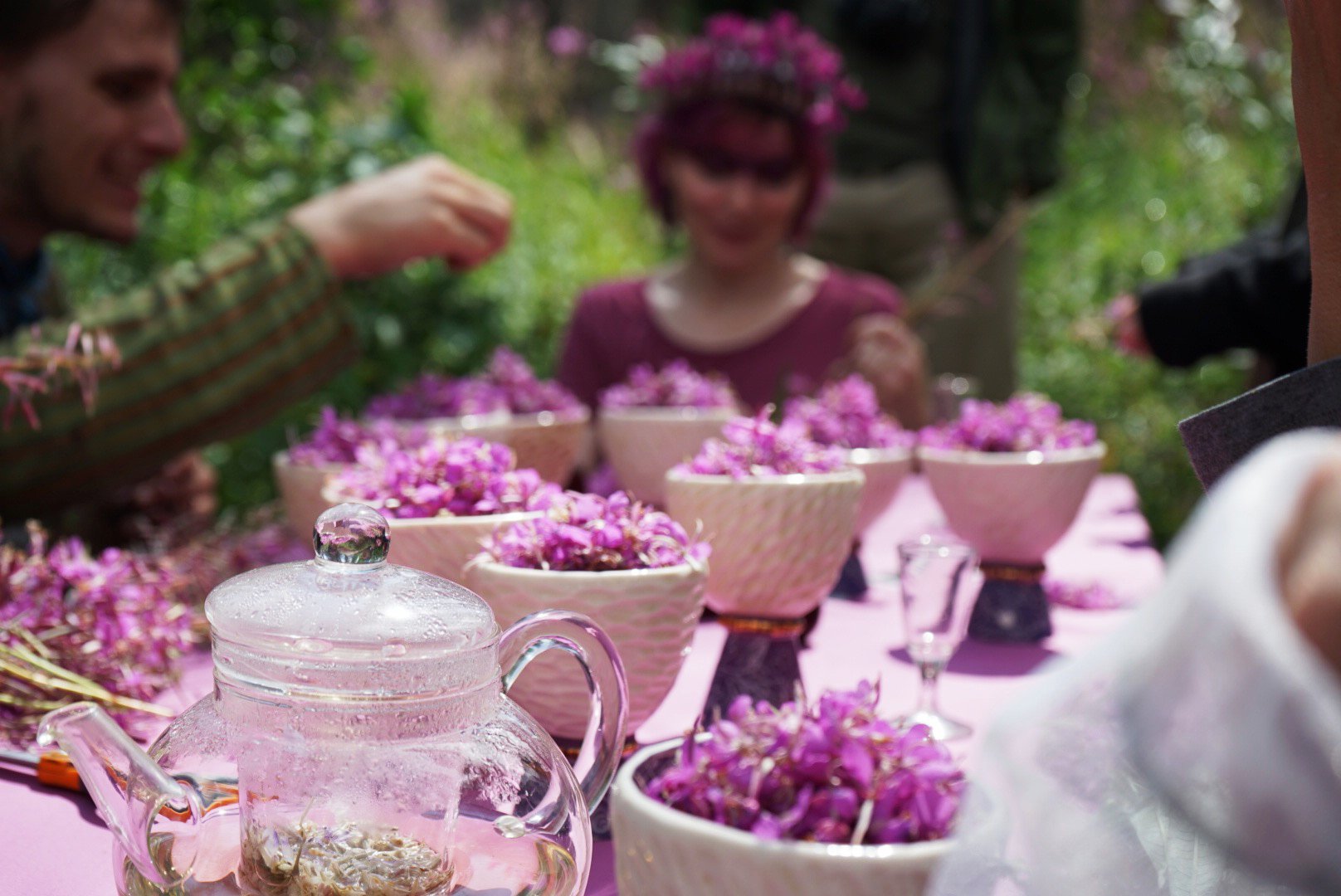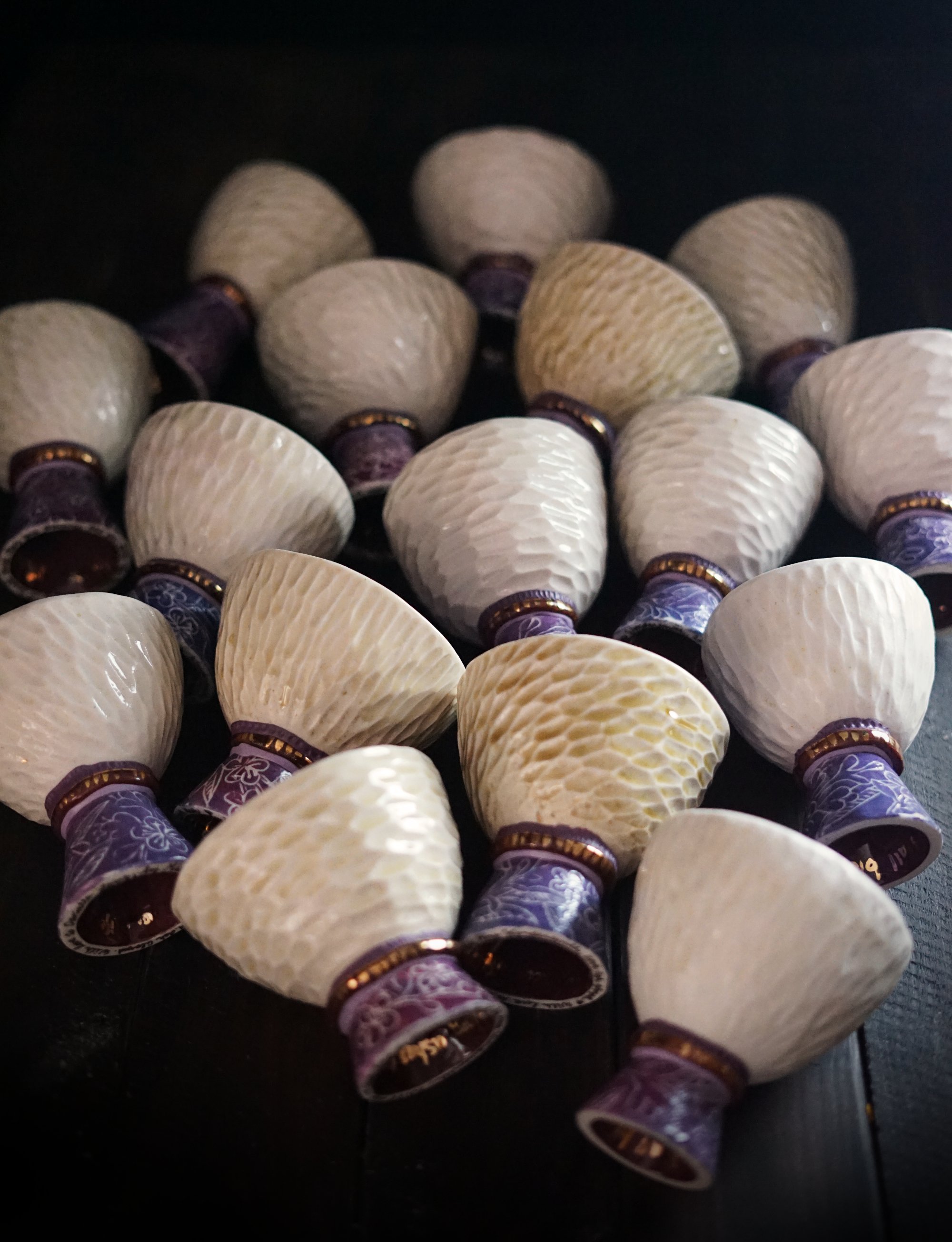Fireweed
In the fire-scarred backwoods of Idaho, we gathered not to grieve the past, but to honor what survived it.
Fireweed was created as a ceremonial send-off for a deeply personal project: a collection of heirloom chalices made for survivors of California’s devastating Camp Fire. Each survivor had sent me ashes from their lost homes—fragments of a life before. I transformed these ashes into glaze, carefully testing and developing each one until the ash could sing in ceramic. No two were alike. Some had a shimmer of color, others a soft textured finish. Each was distinct, as individual as the stories they carried.
The forms themselves featured sgraffito (carved) fireweed—the first flower to grow after fire—etched delicately into their surfaces. A whisper of gold luster crowned each vessel, a subtle nod to their hidden value. These chalices were made not to replace what was lost, but to offer a thread of comfort through grief and transition—objects to hold onto, and pass forward as new heirlooms.
But before I could send them, I needed to fill them with something more: the care and blessings of strangers.
So I returned to one of my favorite forms of kind mischief—hiding painted stones in wild places, each marked with a quiet invitation. Curious souls who found them made their way to me, gathering among meadows reborn from fire. There, near the charred pines of the Pioneer Creek Fire—the largest wildfire in the nation just a few years prior—we spoke of regeneration, resilience, and quiet strength.
Together we talked about our connections to fireweed, one of the first plants to grow in a burned area, and what it symbolized. We harvested fireweed blossoms, their vibrant pink petals glowing in the morning light. These blooms would be dried and transformed into herbal preparations tucked alongside each chalice as offerings of bodily and spiritual nourishment.
We moved gently, our hands full of blossoms and our hearts full of care. We held silence for the lives changed by fire. We gave thanks for the land’s quiet resilience. And in those hours, a new story was written—not just of loss, but of what can bloom after it.



















